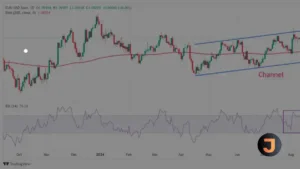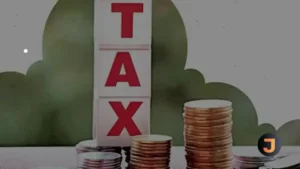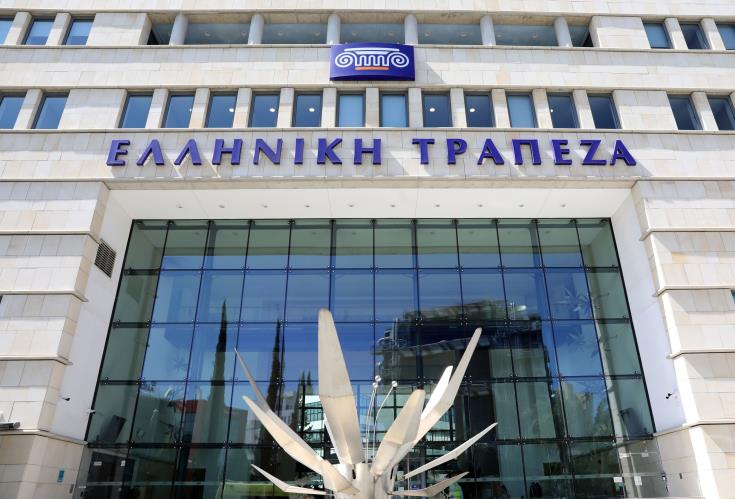The middle class, the tax-paying population of India, stares at the face of the government every time the Budget day approaches. It is that neglected segment that pays both income tax for earnings, and GST for spending. It is this 2% of the entire population of India that is contributing massively to the country’s infrastructure growth and welfare politics.
Just 2.24 crore Indians or 1.6% of the population paid tax, including income tax and corporate tax, in 2022-23, according to data shared by the government in 2023. India has seen a rise in direct taxes, which has two components — taxes on income (income tax) and corporate tax. In a good sign, direct tax receipts are more than indirect taxes now.
Profits for Corporates Up, But Taxes Down?
The rise in income tax receipts surpassing the corporate taxes comes even as the markets have been booming with the benchmark BSE Sensex rising from around 19,000 in 2012 to 80,000 in 2024. “In the last 12 years, stock markets have quadrupled, indicating that profits have gone up. But corporate taxes have gone down as a percentage of total receipts,” says Tiwari. “Tax on income, which is paid by 2% of India’s population, is more than corporate tax. This isn’t tenable in the long term,” says Tiwari.
The government reduced corporate tax in 2019, incurring a loss of Rs 1.44 lakh crore a year. The Economic Survey data shows that between FY20 to FY23, corporate profits have quadrupled. Which again shows that the corporate sector is performing, but paying less taxes due to tax cuts,” says Tiwari.
The taxes were reduced to boost capital expenditure (capex), create private sector jobs and increase exports. The government’s gamble was that the tax break would boost income and earn it taxes. But that hasn’t been the case.
The Economic Survey 2023-24, presented by Finance Minister Nirmala Sitharaman on Monday, pointed this out in no flattering terms. “Results of a sample of over 33,000 companies show that, in the three years between FY20 and FY23, the profit before taxes of the Indian corporate sector nearly quadrupled. Hiring and compensation growth hardly kept up with it,” says the Economic Survey.
“That is why it is in the enlightened self-interest of the Indian corporate sector, swimming in excess profits, to take its responsibility to create jobs seriously,” it adds in a stark message.
Why Not Get More Corporates to Pay Tax?
If the ratio of taxpayers to the population is skewed among the general public, it is no better among corporates. As of October 2022, there were around 15 lakh private companies in India. “Around 10.7 lakh companies filed income tax returns for Assessment Year 2023-24, with 5.1 lakh filing zero-tax returns and only 5.6 lakh paid taxes,” says Amitabh Tiwari.
“Only 5% of companies pay 97% of the total corporate taxes. Among them, the top 150-odd companies pay 40% of the taxes,” says Tiwari. “The disparity is as high as with individual taxpayers, but never discussed,” he adds.
There could be only two conclusions from the dismal tax payments by corporates in India. They are filing zero-returns either because of the significant deductions allowed or because there is stress on the corporate sector, especially MSMEs.
The government has widened the tax net and more individuals are filing tax returns. The tax to GDP ratio of the country has also improved.
Out of the 7.4 crore Indians who filed tax returns in 2022-23, about 5.16 crore people, or 70%, had zero tax liability, according to data shared by Finance Minister Nirmala Sitharaman in Parliament in 2023. It is just 1.6% of the population that is over-taxed.
“The question before the government is how to increase tax collections from corporates. Also, how do you leave more money in the hands of individuals so that it boosts consumption,” says Amitabh Tiwari.
He suggests that standard deduction for individuals or income exemption limit has to be increased for that.
That is what Finance Minister Nirmala Sitharaman seems to have attempted in her seventh Union Budget. The standard deduction was increased by Rs 25,000 to Rs 75,000 in Budget 2024.
“The Standard Deduction limit has been hiked to Rs 75,000 to bring some sort of parity with corporates, which will leave an additional Rs 7,500 (at the highest tax bracket of 30%) in the hands of salaried taxpayers under the new tax regime,” says Tiwari, reacting to the changes in Budget 2024.
Sitharaman also tweaked three tax slabs in the new tax regime. “Tax slabs have also been tweaked at income levels lower than Rs 15 lakh, which will boost flagging consumption,” says Tiwari. The government said there will be a tax saving of up to Rs 17,500 for four crore salaried individuals and pensioners in the new tax regime.
How The Middle Class Is The Beast Of Burden
When it comes to taxing the expenditure of the middle class, the Goods and Services Tax (GST) plays a key role. There’s respite for corporates, but not for individuals.
“Salaried individuals get no refund on GST paid, but corporates get input tax credit,” says Amitabh Tiwari.
“While individuals are taxed on income, corporates are taxed on profits after deducting expenses from income. Standard deduction was introduced to bring some sort of parity but needs to be increased,” says Amitabh Tiwari, explaining why the individual taxpayer is at a disadvantage.
While corporates got tax incentives in the 2019-20 Budget, individual taxpayers last saw a change in 2012-13. That’s over a decade ago.
Despite the contribution towards public infrastructure and services by the middle class, which is around 31% of India’s population, it has to be reliant on private schools and hospitals. Then there is the highway toll.
The highest 30% tax bracket for salaried individuals also kicks in at much lower incomes when compared to countries like Russia, China and the US.
It is also the people who pay the most taxes that have no social security and pension support.
While the government probably has its own reasoning for taking this path, experts point to the discrepancy in the percentage of people and corporates who end up being taxed. That is why in every Budget, the middle class looks up to the government with hope for some little tax relief.






